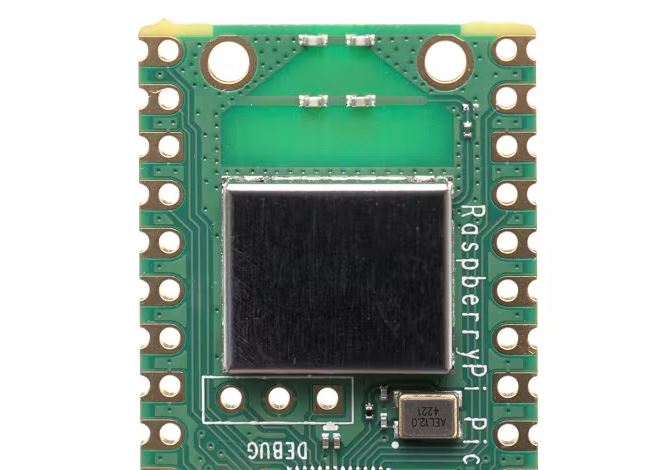The Raspberry Pi Pico W, which goes on sale today for around $6, expands the already outstanding feature set of the RP2040 development board design by including a radio.
The RP2040 and Raspberry Pi Pico, the company's first-ever microcontroller and matching development board, respectively, were an instant success. Its feature set belied its bargain-basement $4 pricing with a potent dual-core Arm Cortex-M0+ CPU, a tonne of general-purpose input/output (GPIO) capabilities, out-of-the-box support for C/C++ and MicroPython, and ingenious programmable input/output (PIO) blocks should you run out of peripherals.
This launch is not a generational one. Aside from a step change from the launch model B0 to the most recent B2, the RP2040 at the core of the new Raspberry Pi Pico W is identical to the first iteration. That entails a dual-core Arm Cortex-M0+ CPU with 264 KB of static RAM and a top speed of 133 MHz, however, it can go much faster when used outside of specifications (SRAM).
The new W-suffix edition of the Raspberry Pi Pico includes 2MB of external QSPI flash on-board, the same as the original Raspberry Pi Pico, disappointing some who hoped the next launch would be a little more generous with the flash memory. It contains the same micro-USB connector at the end, the same eight PIO state machines, and, regrettably, the same pinout silkscreened on the underside, where it is absolutely useless if you're using a breadboard. It also has the same 26 GPIO pins.
The distinction may be seen by descending to the bottom fourth of the board. A PCB antenna is attached to a silver box that houses an Infineon CYW43439 radio module in place of the three-pin Serial Wire Debug (SWD) connector, which has been moved substantially higher up the board and tragically lost its surface-mount-friendly castellated cut-outs.
That's not how Raspberry Pi has gone about things. The business was able to keep costs down and debut the Raspberry Pi Pico W for just $6 by keeping with 2MB of flash, which is plenty for some surprisingly intricate tasks. It's a remarkable accomplishment, and while other boards based on the Espressif ESP8266 family are more affordable, it still offers amazing value for money. It's not the cheapest Wi-Fi-enabled microcontroller board available.
In addition to the Raspberry Pi Pico, which will continue to be sold at its $4 price point for applications that don't require a Wi-Fi connection, the Raspberry Pi Pico W, which is currently available from all Raspberry Pi resellers, is priced at $6. The Raspberry Pi website has further information.













